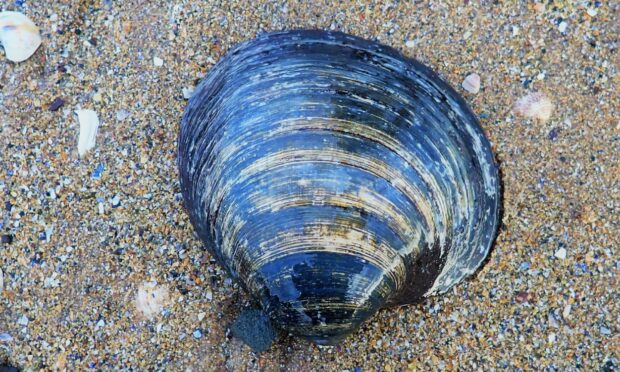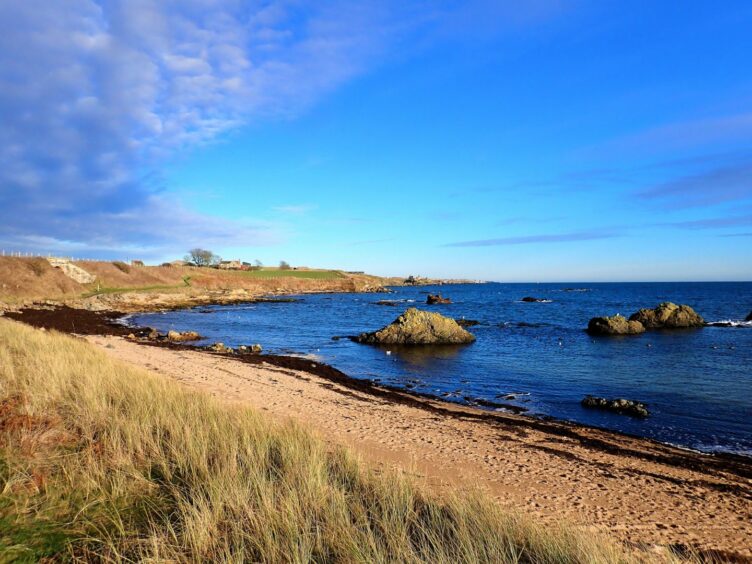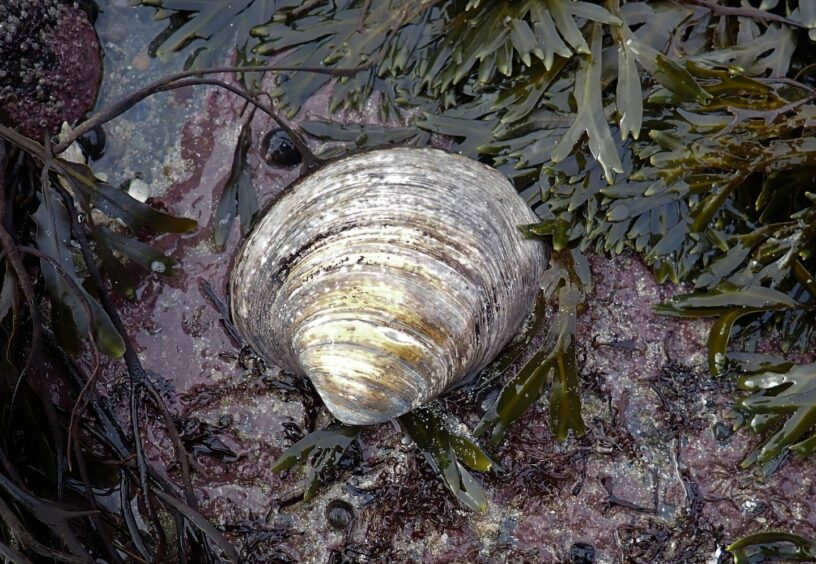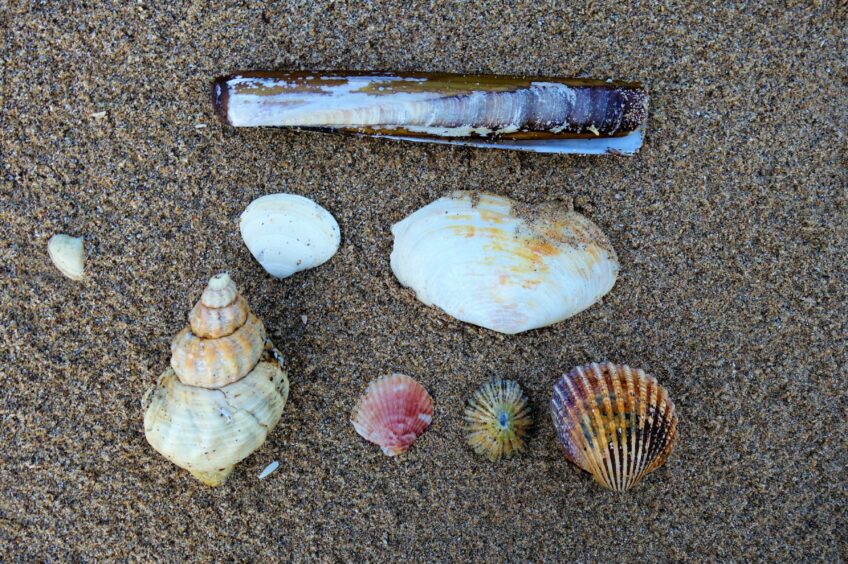It was low tide on the shore near Elie in Fife and I began to potter around some pools that pockmarked a rock shelf bordering the sand.
I turned a few rocks, but the strength of the wind quickly froze my fingers, so I abandoned the search for pool creatures and instead walked slowly along the natural rock platform, scanning around my feet all the time.
Encrusted on some rocks were the white scribble-like ridges made by keel worms; calcareous protective tube-like casings, which are so familiar to us all.
Incredibly hard
Their casts are incredibly hard and a bane for mariners as they can foul propellers and hulls.
Several carrion crows methodically picked their way over the rocks, turning over fronds of bladder wrack to search for creatures like crabs hiding beneath.
Crows are intelligent birds and will frequently visit shorelines to forage.
Then, a shining glimmer from a patch of sand – it was the semi-buried shell of a mollusc and quite unlike any other on the shore.
I prised it free from the clawing grip of the wet sand and cradled it in my hand.
It was the half-shell of an ocean quahog, sometimes also known as the Icelandic cyprine.
It had not long perished and the shell still gleamed bright, similar in colouration to a mussel, with a vibrant, glistening navy glint that almost bordered on black.
It was large clam-shaped shell – about 10cm across at the widest point – and patterned with a series of paler concentric rings.
What are ocean quahogs?
Ocean quahogs are among the longest-lived creatures known.
One individual discovered by Icelandic researchers was found to be over 500 years old.
As the animal grows, rings are laid down in the shell much in the same way as inside a tree trunk.
The growth rings are at wider increments when conditions are more favourable and narrower when less so.
By analysing these growth rings, scientists can delve into the past and determine changes in the marine environment that occurred over previous centuries.
The ocean quahog in my hand was like an environmental history book that chronicled natural events in our seas over the past few centuries.
Ocean quahogs are found on sandy and muddy sediments below 10m depth and occur all around Scotland, although most frequently in the northern North Sea.
Are they in decline?
Sadly, it is thought this intriguing animal may be in decline, which is one reason behind the establishment of the Firth of Forth Banks Complex Marine Protected Area, covering a large area of undersea shelf banks and mounds stretching from sea off Angus in the north down to Berwickshire in the south.
The area is home to an array of other ecologically important and vulnerable creatures, including sandeels, brittlestars and soft corals, as well forming an important spawning ground for plaice.
I held the shell for a while longer, my mind buzzing with excitement about this wonderful find.
Then, I gently placed it back onto the patch of sand, leaving the incoming tide to swirl over this natural antiquarian treasure that holds so many secrets from the past.




Conversation